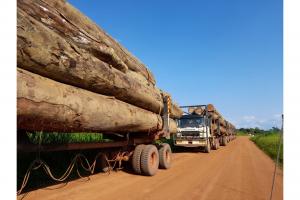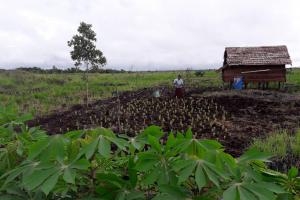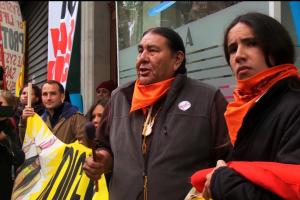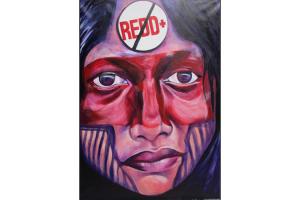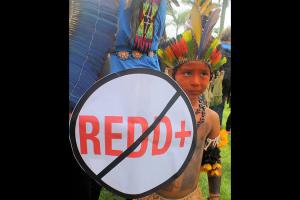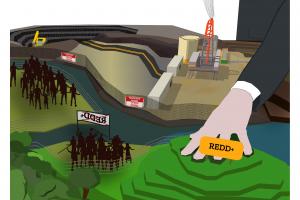At the UN climate conference in 2021, the government of Gabon presented itself as champion in the fight against climate breakdown. Would fossil fuel extraction in Gabon come to an end? No. At its core are a deal signed in 2019 with the fossil fuel producer Norway and the Grande Mayumba project.
The Green Economy
The Green Economy is a tactic used to “clean up” the image of corporations rather than address corporate capture and capitalism as the true drivers of deforestation. False solutions promoted under the Green Economy include certification, sustainable forest management, ecosystem services, REDD+, the bioeconomy, nature-based climate solutions, and zero net deforestation. Rather than stopping it, these “solutions” support corporate-driven destruction that is causing a deep social and ecological crisis.
Articles
29 April 2022
Articles
29 April 2022
The design of the complaint mechanism has systematically failed to resolve the communities' complaints. But then, why does this mechanism exist?
Articles
28 April 2022
The UK company Envirotrade began a REDD+ project in 2003 that involved communities in the buffer zone of the Gorongosa National Park. In 2018, the company abandoned the region, leaving behind unfulfilled obligations, debts to villagers and hundreds of perplexed families.
Articles
28 April 2022
‘Carbon concessions’ established to generate and sell carbon credits are also deeply eroding communities’ structures, their organization and community reproduction.
Articles
28 April 2022
This article outlines the carbon pricing system in Colombia and reveals how mining companies have been using REDD+ to legally avoid paying taxes while claiming ‘carbon neutrality’.
Publications
28 April 2022
This publication gathers eleven articles that reflect on fundamental and dangerous dimensions of Reducing Emissions from Deforestation and Forest Degradation (REDD), the dominant forest policy around the world since 2007.
Articles
28 April 2022
Letícia Yawanawa, an indigenous leader from Acre, and Dercy Teles de Carvalho, ex-president of the Xapuri Rural Workers’ Union and an advocate for "extrativistas" talk about how REDD+ has affected the lives of women in communities that depend on forests.
Articles
27 April 2022
Interview with Tom Goldtooth, Indigenous Environmental Network.
Articles
27 April 2022
For REDD+ to work, it has to divide people in three classes. One is that which supposedly saves the forests – ‘active people with initiative’. A second class supposedly lets forests die when no REDD+ money is being paid to keep them alive – ‘predictably passive beings’. And a third class which mainly applauds the first class efforts.
Articles
25 April 2022
This article is part of the publication "15 Years: A Mechanism Rotten at the Core".
Articles
25 April 2022
REDD has undoubtedly failed to reduce large-scale deforestation. Yet, focussing on the obvious failure of REDD, provides an incomplete picture of its damaging legacy.
Articles
25 April 2022
This article is part of the publication "15 Years of REDD: A Mechanism Rotten at the Core"
